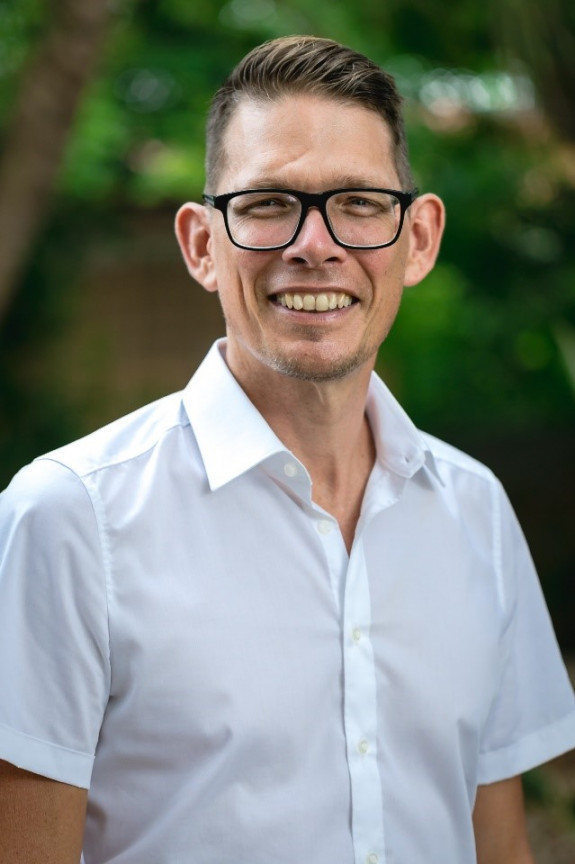Tiny Forest Curaçao

Profile Lennart Bak
Organization: Tiny Forest Curaçao
Email address:
l_s_bak@hotmail.com
What was your personal motivation to plant your first forest?
Lennart: I was born on the island of Curaçao and I recently returned to the Island. When I was living in Amsterdam and was working as a campaigner for the Labour Party, I got more and more interested in the challenges posed by the climate crisis for urban areas. Subsequently I came across the TEDex talk in which Shubendu describes how he transformed his backyard into a Tiny Forest. Enlightened and inspired by the talk, I did more research on reforestation and I found out how IVN was planting Tiny Forest in the Netherlands. This was a movement I wanted to be part of. Soon after, my wife got a job on Curaçao and I started making plans for my remigration. I thought about it and researched various possible projects I could set up on Curaçao: What could I do that would benefit the Island? And then I realized that on Curaçao, like in many different places, people have lost their connection with their natural surroundings. Large-scale project development has destroyed the natural habitat of the island, the forest and beaches. Nature is viewed as worthless and used for dumping garbage. Most people and children have absolutely no idea of the island’s original vegetation. So I decided that it was here that I could and should make a difference! And planting Tiny Forests and educating schoolchildren about them would be the start of it. I planted one Tiny Forest so far – but I plan to plant many others!
Can you describe the surroundings of your first forest, what type of place did you convert?
Lennart: The Tiny Forest that we planted is situated between a busy road and a primary school. The place we converted was a barren piece of land about 160m2 with sand, rocks, some weeds and two palm trees on it. The palm trees are still there but they are now surrounded by a growing green forest with at least 450 plants and trees of 38 different species!
What were the biggest obstacles in planting this forest?
Lennart: There is hardly any infrastructure suited for reforestation projects so I had to do quite some pioneering. One of the big obstacles is the availability of native plants: people tend to plant exotic plants in their gardens. Since there is little demand for native trees and plants the nurseries don’t grow them in the quantities needed nor in the desired variety. Another obstacle are finances, there are hardly any funds for reforestation projects.
Who did you cooperate with? How did the local community respond to the forest?
Lennart: I cooperated with a local school. They were very excited about the project and really did everything within their scope to make it a success. Other partners I collaborated with are Carmabi, the local institute on research and management of Biodiversity, and Uniek Curacao, a voluntary organization with more than 32 nature and recreation areas under maintenance who helped with material and volunteers to plant the saplings. The forest is on school premises and not open to public. But it has been in the papers and on the radio and the local community has responded with great enthusiasm. They participated as volunteers during planting and I’ve had lots of people drop by, wanting to have a look and a chat.
Did you encounter any rare species of plants and animals? Or which did you never expect to find in your forest?
Lennart: Well, I was amazed by the number of butterflies and hummingbirds attracted by the plants and their flowers. Directly after we planted, they appeared en masse. I never expected that.
What did you learn from your first forest?
Lennart: Two things. One and most importantly: you can plant Tiny Forests even on Curaçao. Because it’s really dry and arid I had to deal with a lot of skepticism at first. However, I was convinced that the technique of Shubendu and Miyawaki could be put into practice in a semi-arid environment, because it has been put into practice in Iran, Lebanon, and dryer parts of India. But that was theory, it still needed to be tested and put into practice. I had to take the differences in vegetation into account (ie. the lack of canopy trees) and adjust it to the local environment. I think we have proven that it can be done. The second is that planting a Tiny Forest and getting all the participants engaged is a beautiful experience in itself. And seeing the forest grow is a major bonus: it gives you joy every day.
What is the next thing you want to learn about in forest making?
Lennart: There a quite a lot of things I would like to learn more about. One thing I would like to learn more about is the Tropical Dryforest that originally grew in the Caribbean. Since the islands where completely turned upside down after their discovery, not much is known of the original vegetation. I would like to learn what grew here through Palynology*. The second thing I would like to study is how to reforest on a slightly bigger scale to have a bigger impact. Or how to connect multiple Tiny Forests so that over time they can grow into a bigger Forest. *Palynology, the study of fossil pollen and spores in old deposits, can help us to reconstruct the vegetation history for the Dutch Antilles.
This is a project of Hofi Chiki.

